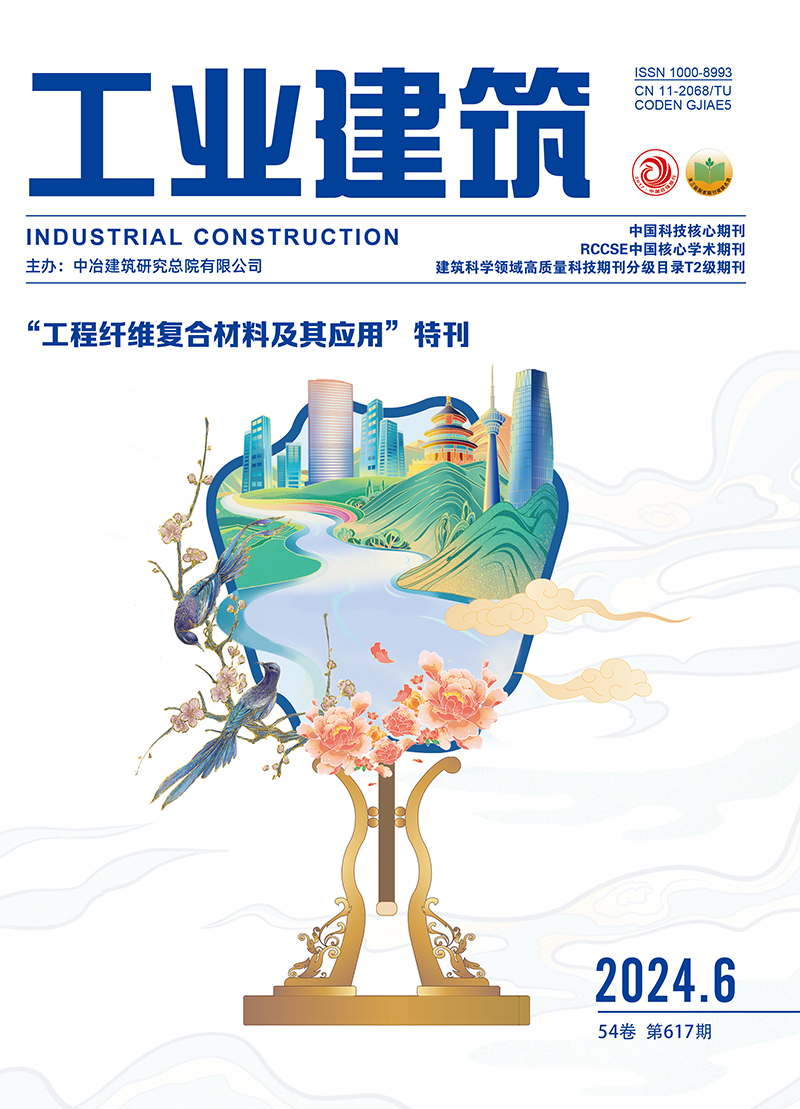| [1] |
吴维, 卢玉南, 覃英宏, 等. 生物炭混凝土生命周期CO2排放评价[J]. 建筑科学与工程学报, 2023, 40(3): 20-29.
|
| [2] |
ANDRES R J, MARLAND G, FUNG I, et al. A 1°×1° distribution of carbon dioxide emissions from fossil fuel consumption and cement manufacture, 1950—1990[J]. Global Biogeochemical Cycles, 1996, 10(3):419-429.
|
| [3] |
齐冬有, 张标, 罗宁. 水泥工业碳减排的技术路径[EB/OL].(2021-06-08) [2023-03-29]. https://www.ccement.com/news/content/13050268544005001.html.
|
| [4] |
马忠诚, 汪澜. 水泥工业CO2减排及利用技术进展[J]. 材料导报, 2011,25(19):150-154.
|
| [5] |
SCRIVENER K L, JOHN V M, GARTNER E M. Eco-efficient cements: potential economically viable solutions for a low-CO2 cement-based materials industry[J]. Cement and Concrete Research, 2018, 114:2-26.
|
| [6] |
HIGUCHI T, MORIOKA M, YOSHIOKA I, et al. Development of a new ecological concrete with CO2 emissions below zero[J]. Construction and Building Materials, 2014, 67: 338-343.
|
| [7] |
李金文, 顾凯, 唐朝生, 等. 生物炭对土体物理化学性质影响的研究进展[J]. 浙江大学学报(工学版), 2018, 52(1): 192-206.
|
| [8] |
AKHTAR A, SARMAH A K. Novel biochar-concrete composites: manufacturing, characterization and evaluation of the mechanical properties[J]. Science of the Total Environment, 2018, 616-617: 408-416.
|
| [9] |
GUPTA S, KUA H W. Factors determining the potential of biochar as a carbon capturing and sequestering construction material: critical review[J]. Journal of Materials in Civil Engineering, 2017, 29(9), 04017086.
|
| [10] |
窦雅芬. FRP约束生物炭骨料混凝土轴压力学性能研究[D]. 西安: 西安建筑科技大学, 2023.
|
| [11] |
KÖROĞLU M A, CEYLAN M, ARSLAN M H, et al. Estimation of flexural capacity of quadrilateral FRP-confined RC columns using combined artificial neural network[J]. Engineering Structures, 2012, 42:23-32.
|
| [12] |
WU Y F, JIANG J F. Effective strain of FRP for confined circular concrete columns[J]. Composite Structures, 2013, 95(1): 479-491.
|
| [13] |
MONTI G, NISTICO N. Square and rectangular concrete columns confined by CFRP: Experimental and numerical investigation[J]. Mechanics of Composite Materials, 2008, 44: 289-308.
|
| [14] |
MIRMIRAN A, SHAHAWY M. A new concrete-filled hollow FRP composite column[J]. Composites Part B Engineering, 1996, 27(3/4): 263-268.
|
| [15] |
MIRMIRAN A, SHAHAWY M. Closure to "behavior of concrete columns confined by fiber composites" by amir mirmiran and mohsen shahawy[J]. Journal of Structural Engineering, 1998, 124(9): 1095-1095.
|
| [16] |
SAAFI M, TOUTANJI H A, LI Z. Behavior of concrete columns confined with fiber reinforced polymer tubes[J]. ACI Structural Journal, 1999, 96(4): 500-509.
|
| [17] |
SAMAAN M, MIRMIRAN A, SHAHAWY M. Model of concrete confined by fiber composites[J]. Journal of Structural Engineering, 1998, 124(9): 1025-1031.
|
| [18] |
中华人民共和国住房和城乡建设部.普通混凝土用砂、石质量及检验方法标准: JGJ 52—2006[S].北京:中国建筑工业出版社, 2006.
|
| [19] |
叶扬天. 生物质烘焙特型及动力学研究[D].南京:南京师范大学, 2019.
|
| [20] |
敬登虎, 曹双寅. FRP约束混凝土极限状态下破坏机理分析[J]. 特种结构, 2007(2): 93-95.
|
| [21] |
毛志杰, 黄靓, 吴越, 等. 纤维增强复合材料约束尾矿粉地聚物再生混凝土轴压性能研究[J]. 工业建筑, 2023, 53(6): 209-217.
|
| [22] |
FENG P, CHENG S, BAI Y, et al. Mechanical behavior of concrete-filled square steel tube with FRP-confined concrete core subjected to axial compression[J]. Composite Structures, 2015, 123: 312-24.
|
| [23] |
LAM L, TENG J. Design-oriented stress-strain model for FRP-confined concrete[J]. Construction and Building Materials, 2003, 17: 471-489.
|
| [24] |
NISTICO N, PALLINI F, ROUSAKIS T, et al. Peak strength and ultimate strain prediction for FRP confined square and circular concrete sections[J]. Composites Part B, 2014, 67(12): 543-554.
|
| [25] |
MIRMIRAN A, SINGHVI A, MONTI G. FRP-confined concrete model[J]. Journal of Composites for Construction, 1999, 3(1): 62-65.
|
| [26] |
JIANG T, TENG J G. Analysis-oriented stress-strain models for FRP-confined concrete[J]. Engineering Structures, 2007, 29(11): 2968-2986.
|
| [27] |
RICHART F E, BRANDTZG A, BROWN R L. Failure of plain and spirally reinforced concrete in compression[J/OL]. Engineering, Materials Science, 1929. https://api.semanticscholar.org/CorpusID:136940705.
|
| [28] |
SAMAAN, MIRMIRAN A, SHAHAWY M. Model of concrete confined by fiber composites[J]. Journal of Structural Engineering, 1998, 124 (9): 1025-1031.
|
| [29] |
TOUTANJI H A. Stress-strain characteristics of concrete columns externally confined with advanced fiber-composite sheets[J]. ACI Materials Journal, 1999,96 (3): 397-404.
|
| [30] |
XIAO Y, WU H. Compressive behavior of concrete confined by carbon fiber composite jackets[J]. Journal of Materials in Civil Engineering, 2000(2): 12:139-146.
|
| [31] |
MANDER J A B, PRIESTLEY M J N.Theoretical stress-strain model for confined concrete[J]. Journal of Structural Engineering, 1988, 114(8): 1804-1826.
|
| [32] |
吴刚, 吕志涛. FRP约束混凝土圆柱无软化段时的应力-应变关系研究[J]. 建筑结构学报, 2003(5): 1-9.
|
| [33] |
FARDIS M N. KHALILI H H. FRP-encased concrctc as a structural material[J]. Magazine of Concrete Research, 1982,34(121): 191-202.
|
| [34] |
MORAN D A, PANTELIDES C P. Damage-based stress-strain model for fiber-reinforced polymer-confined concrete[J]. Journal of Composites for Construction, 2005, 6(4): 233-240.
|
| [35] |
MARQUES S P C, MARQUES D C S C, LINS DA SILVA J, et al. Model for analysis of short columns of concrete confined by fiber-reinforced polymer[J]. Journal of Composites for Construction, 2004, 8(4): 332-340.
|


 Login
Login Register
Register E-alert
E-alert







 DownLoad:
DownLoad: